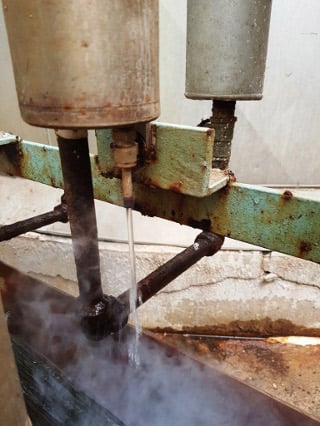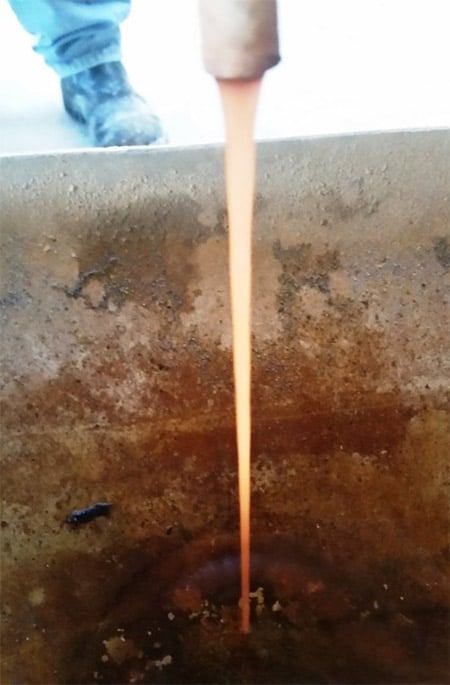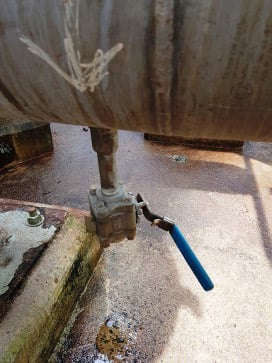Boiler water treatment is crucial to avoid corrosion, deposition, carryover, increased fuel consumption, tube failures, unplanned shutdowns and many other operational challenges. The higher the boiler pressure, the more critical its chemical treatment becomes. However, even low-pressure boilers require strict boiler and steam quality control to minimize problems and extend their lifespan.
To maintain stringent chemical control over feedwater, boiler water, steam (both saturated and superheated) and condensate, operators can conduct both laboratory testing (i.e., grab sampling) and online testing. However, unlike simple drinking water sampling, boiler water sampling presents unique challenges due to high temperatures. Even low-pressure boiler water is hot enough to require specialized procedures for accurate testing and boiler water corrosion prevention.
Why Proper Cooling Matters in Boiler Water Treatment and Sampling
Hot water and steam within a closed vessel or tube are under pressure. If feed water, boiler water, steam or condensate are sampled improperly, by opening a valve directly to a bottle, the fluid will flash. This causes a significant portion of the mass to vaporize. The phenomenon concentrates dissolved solids such as calcium (Ca), iron (Fe) and silica (SiO2), leading to inaccurate chemical test results. In addition, many volatile chemicals, including oxygen scavengers, amines and dissolved gases, may be partially or totally lost due to steam flashing.
Improper cooling also affects key properties like pH, alkalinity and conductivity, especially in high-purity water systems. Finally, sampling without proper cooling poses a serious safety risk, as operators may be exposed to burns from high-temperature fluids.
Industry Standards for Boiler Water Sampling Best Practices
As with other critical industrial water treatment operations, boiler water and steam sampling procedures are defined by international standards. The American Society for Testing and Materials (ASTM) has developed the following guidelines:
- ASTM D1192: Equipment for Sampling Water and Steam in Closed Conduits, which provides specifications for sampling coolers, mechanical data, valves and pressure reducers.
- ASTM D5540: Flow Control and Temperature Control for On-Line Water Sampling and Analysis, which outlines best practices for controlling water flow and temperature during on-line sampling and testing.
These standards provide sampling tips for industrial boilers, offering many important best practices. Unfortunately, many industrial sites overlook these guidelines. Key recommendations include:
- Using stainless steel tubing for high purity waters
- Installing an isolation valve for maintenance
- Ensuring continuous sampling
- Maintaining a sample temperature of 25°C (77°F)
- Achieving a sample velocity of 1.8 m/s (6 ft/s)
Unfortunately, as illustrated below, operators in many industrial sites fail to follow the published standards, especially those pertaining to temperature and velocity.
Common Boiler Sampling Mistakes and How to Avoid Them
Inadequate Sampling Velocity
The minimum velocity requirement of 1.8 m/s (6 ft/s) is essential for monitoring corrosion products — mainly iron oxides but also potentially others, like copper. Metal oxides tend to precipitate under conditions of high temperature (localized steaming) and low velocity (oxides may settle). This can lead to misleading water quality results.
If temperature and velocity are not within the proper range, the test results from the sample may not be reliable, increasing the risk of poor water treatment decisions. Figure 1 provides an example of how not to properly sample hot water in a boiler system.

Figure 1 – Incorrect hot water sampling.
Figure 2 shows a sampler operating at a very low velocity (~0.2 m/s). The water lab tests did not show any presence of iron. During the inspection, the flow was first maximized to remove internal oxide deposits, which can be seen. Afterwards, the velocity was regulated around 1.8 m/s, and the iron results were considered much more reliable.

Figure 2 – Sampler on maximum flow to remove deposited oxides.
Inadequate Sample Cooling Systems
A sample cooler must be constructed as a small coil-type heat exchanger. It cannot be in any other configuration, like a plate and frame heat exchanger. Figure 3 illustrates an incorrect setup observed in the field, where the sampling cooler was adapted with a common food industry plate and frame heat exchanger. This is not recommended and can lead to inaccurate results.

Figure 3 – Incorrect sampler (plate and frame) for hot water sampling.
Figure 4 is another example of improper hot water sampling. This setup was located in the condensate line from the industrial process returning to the boiler system. It does not have a sampler. In this situation, the operator simply opens the valve and must fight against the dangerous hot condensate to get a few drops of water due to strong steam flashing. The laboratory results from this point are negligible.

Figure 4 – Absence of cooling sampler for condensate line.
Failure to Use Proper Steam Sampling Techniques
Special attention is needed when sampling steam lines. Because steam is in a gaseous phase, improper sampling, such as welding a simple sample tube to the steam line, fails to ensure uniform velocity throughout the tube. The solution is isokinetic sampling, which ensures that all phases of the sampled fluid enter the sampling nozzle with the same velocity and direction as the main stream.
Isokinetic sampling is necessary for accurate boiler water chemical tracking because the sampled stream is almost always a two-phase fluid, and the second phase has a chemical composition that is very different from the steam or water. In addition, the second phase (droplets or particles) has a density and inertia that is different from the primary phase (gas or liquid). Without isokinetic sampling, these phases will not be proportionally represented, leading to inaccurate results. ASTM D1066: Standard Practice for Sampling Steam provides recommendations for proper steam sampling in this type of application.
Conclusion
Following proper steam sampling procedures is essential for maintaining optimal boiler operation, preventing corrosion and ensuring accurate chemical testing for boilers. By following recommended steam and condensate sampling methods, such as maintaining adequate sample velocity, ensuring adequate cooling, and using isokinetic sampling for steam, industrial sites can significantly improve their water treatment processes. Adhering to ASTM standards helps ensure reliable test results and safe sampling conditions, reducing the risk of costly errors in boiler water management.